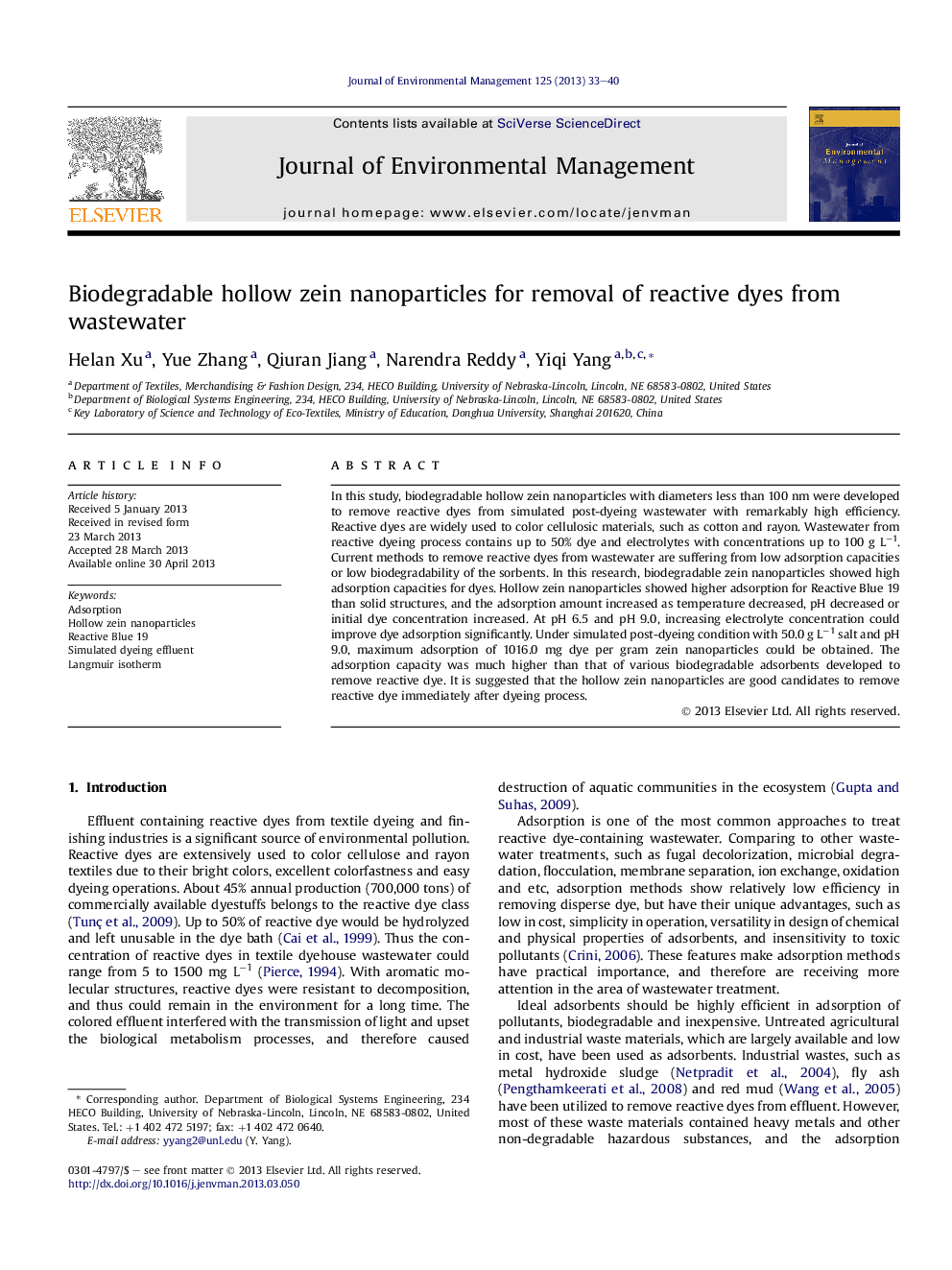| Article ID | Journal | Published Year | Pages | File Type |
|---|---|---|---|---|
| 1055885 | Journal of Environmental Management | 2013 | 8 Pages |
•Biodegradable hollow protein nanoparticles (<100 nm) were fabricated from the agricultural byproduct, corn zein.•Maximum adsorption of Reactive Blue 19 was 1016 mg per gram of hollow zein nanoparticles.•Electrolyte in the dyeing effluent significantly promoted the adsorption of reactive dye onto zein nanoparticles.•Hollow zein nanoparticles could effectively remove reactive dyes from real post-dyeing wastewater.
In this study, biodegradable hollow zein nanoparticles with diameters less than 100 nm were developed to remove reactive dyes from simulated post-dyeing wastewater with remarkably high efficiency. Reactive dyes are widely used to color cellulosic materials, such as cotton and rayon. Wastewater from reactive dyeing process contains up to 50% dye and electrolytes with concentrations up to 100 g L−1. Current methods to remove reactive dyes from wastewater are suffering from low adsorption capacities or low biodegradability of the sorbents. In this research, biodegradable zein nanoparticles showed high adsorption capacities for dyes. Hollow zein nanoparticles showed higher adsorption for Reactive Blue 19 than solid structures, and the adsorption amount increased as temperature decreased, pH decreased or initial dye concentration increased. At pH 6.5 and pH 9.0, increasing electrolyte concentration could improve dye adsorption significantly. Under simulated post-dyeing condition with 50.0 g L−1 salt and pH 9.0, maximum adsorption of 1016.0 mg dye per gram zein nanoparticles could be obtained. The adsorption capacity was much higher than that of various biodegradable adsorbents developed to remove reactive dye. It is suggested that the hollow zein nanoparticles are good candidates to remove reactive dye immediately after dyeing process.
